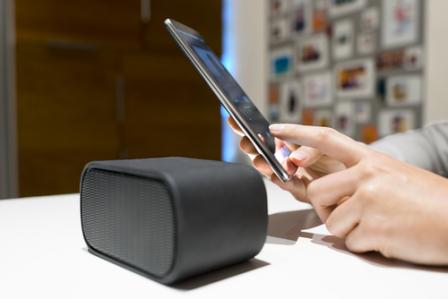Which Is Better: Bluetooth or NFC?
Learn the major differences between Near FIeld Communications (NFC) and bluetooth.
A few weeks ago, I received a question from a listener about the differences between NFC (Near Field Communication) and Bluetooth. This week, I hope to clear up any confusion between Bluetooth and NFC and highlights the benefits of each.
What Is Bluetooth?
I just did a whole episode on Bluetooth, which you can find here. If you’re just here for the high level comparison, though, Bluetooth is a technology that is meant for short range distances—typically around 30 ft at the max. It’s included in almost all phones now so that you can connect you phone to your car, headsets, speakers, and a whole host of other devices, so long as you are nearby.
Bluetooth was created way back in the 1990s and is incredibly popular because of the range of uses it has, such as file transfer and even geolocation. It’s a pretty solid technology and will be here for a very long time.
What Is NFC?
NFC is another type of communication that is meant for short range communication very quickly. Unlike Bluetooth, NFC has a short distance of 4cm. NFC uses an extremely small amount of power, and is great for payment apps (such as through Apple Pay and Google Wallet).
NFC is also extremely useful for reading information. For example, if you’re an Android phone user, you’ve probably seen the small NFC stickers that you can buy to program to your phone. With an Android device with NFC, you can touch your phone to a sticker and then your phone can perform whatever action you have it programmed to do.
You can do this using the two apps, Tasker and Trigger. Basically they are a one-stop shop for Android automation. I used to use these apps, along with my android phone, to program certain actions to happen when I touched my phone to a sticker. For example, I had one set up to open my podcast manager and start playing from a specific playlist. This was great when I was in the car because I just tapped my phone to a sticker and bam.
I had another one in the kitchen that would open Evernote to my grocery list so it was easy to add items to it. A lot of these little actions save steps and make multi action steps easy to do. In fact it’s what I miss most about switching from Android to the iPhone is the distinct lack of useful NFC.
Weighing the Differences
Now that we know a bit about each, let’s get back to the question at hand. Which is better: NFC or Bluetooth? It’s a loaded question because while they do both transmit wireless data short distances, they have completely different uses.
For example, as I was saying, before NFC has a range of only 4 cm. That sounds pretty useless for something wireless to have such a short range, so what gives? One of the primary uses in phones for NFC is for payments. You don’t want your payment information to be transmitted very far, say when you’re at the grocery store.
If Apple Pay or Google wallet instead used Bluetooth, that information would get sent up to 30 ft away, which means someone could be across the store away from you or even in a parked car reading that information. NFC also uses a fraction of the energy that Bluetooth does. This is great because it means you don’t have to worry about switching it on or off when you’re trying to save battery, and a day of shopping using Apple Pay or Google Wallet won’t drain your battery.
It’s funny actually how well Bluetooth and NFC seem to work together. Each uses one’s weakness as a strength. Bluetooth has range, but with NFC you don’t want range. Bluetooth can transfer a lot of data, and NFC can transfer a little bit of data extremely quickly.
To drive this home even more, there are devices that are actually using a combination of Bluetooth and NFC for their devices. Normally with Bluetooth, the first time you set up a device, you have to program it into your phone. This can take a little bit of time getting numbers right and making sure a device is “discoverable.” Companies are using NFC to exchange that information quickly to make setup of a Bluetooth device much less painful!
What’s the Future for NFC?
What’s really interesting is that NFC seems to be missing from half of the phone market (Apple, I’m looking at you). However, iPhone 6s and newer actually have NFC built into them. This is how they use Apple Pay. However, Apple devices don’t have any of the other slick automation and tagging tools like Android because at this time NFC is only available for the main operating systems and not to any apps.
This means even if they wanted to app developers couldn’t use NFC if they wanted to! In summer 2015, Apple joined the NFC Forum, which guides how the technology will progress in the future. Now they are rubbing elbows with Google, Samsung, and a whole host of other companies that also use NFC.
Remembering back a couple of years, this same situation played out with the fingerprint reader on Apple devices. At first, only the main operating system had access to it, and then a year later, apps were given access to it too. I’d be willing to bet that with the release of the next iPhone that NFC will start coming to iOS apps.
Until next time, I’m the Tech Talker, keeping technology simple!
Image courtesy of Shutterstock.





